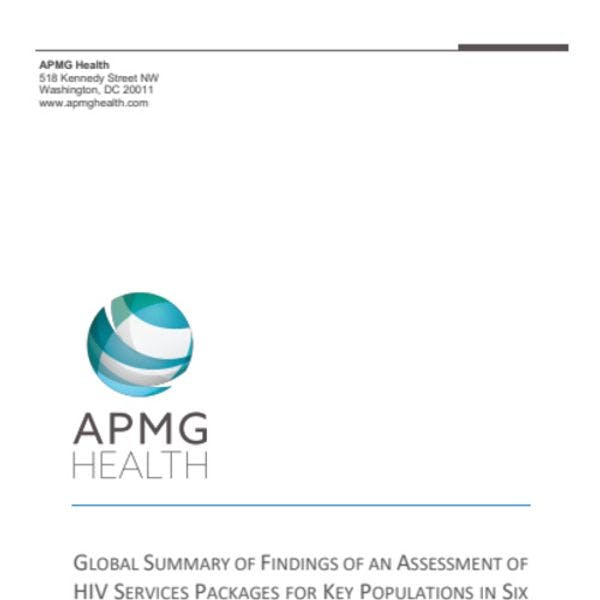Résumé global des conclusions d'une évaluation des services relatifs au VIH destinés aux populations clés dans six régions
APMG identifie les progrès réalisés dans la mise en œuvre des services relatifs au VIH pour les populations clés tout en soulignant des obstacles sociaux et structurels. Pour en savoir plus, en anglais, veuillez lire les informations ci-dessous.
In 2017, key populations (KP) and their sexual partners accounted for approximately 40% of new HIV infections globally (UNAIDS, 2018). A range of policy and legal barriers and harmful social dynamics increase the HIV vulnerability of KP and undermine their access to HIV and other services. The criminalization of sex between men, sex work, drug use and HIV transmission, as well as high rates of incarceration, homophobia, trans phobia, violence and social marginalization, all serve to influence risk practices and undermine access to services. People from key populations often migrate to cities in search of safer and more secure communities (UNAIDS, UN Habitat 2015). Women in key populations face specific challenges and barriers, including gender-based violence (GBV) and poorly tailored services. These factors further intensify their vulnerability to HIV.
There are five groups recognized by United Nations (UN) agencies as key populations at increased risk for HIV. Each has a significantly higher risk of acquiring HIV infection than the general population, globally. Sex workers (SW) face unsafe working conditions, barriers to negotiating condom use, violence and inadequate access to health care services, which all contribute to their increased HIV risk and burden when compared to the general population. The risk of acquiring HIV for female sex workers (FSW) was 13 times higher than adult women aged 15-49 years (UNAIDS, 2018). Transgender sex worker, male sex workers, and also male sex workers who have sex with men are subpopulations of sex workers who appear to be at extremely high risk of acquiring HIV. Sex workers also experience marginalization and increased vulnerability to violence globally (WHO, 2013).
In many settings, men who have sex with men (MSM) make up increasing proportions of new HIV infections. Gay men and other MSM were 28 times as likely to acquire HIV when compared to heterosexual men (UNAIDS, 2018). Men who have sex with men are disproportionately affected by HIV when compared to the general population in any country, but most notably in low- and middleincome countries. In these countries, MSM are 19.3 times more likely to be living with HIV compared to the general population (UNFPA, 2015).
